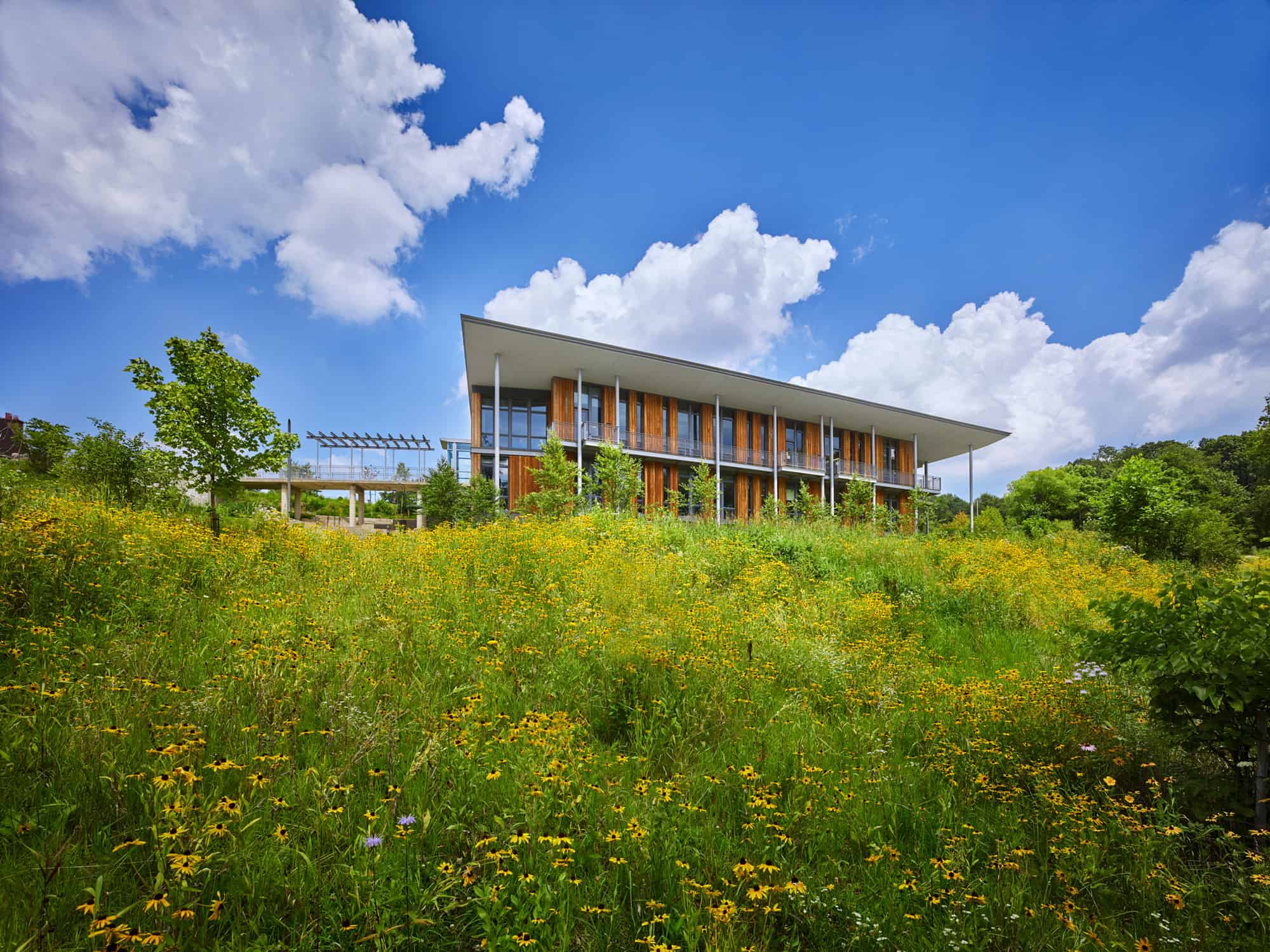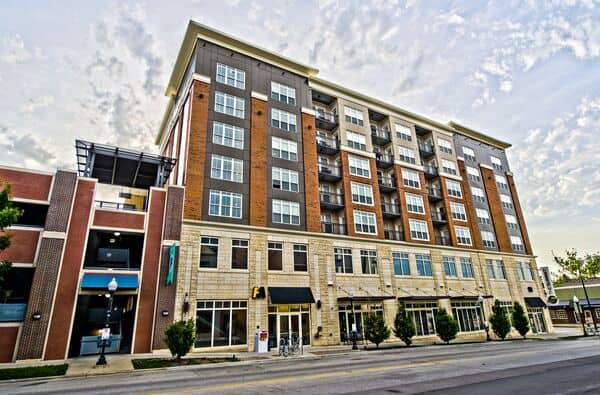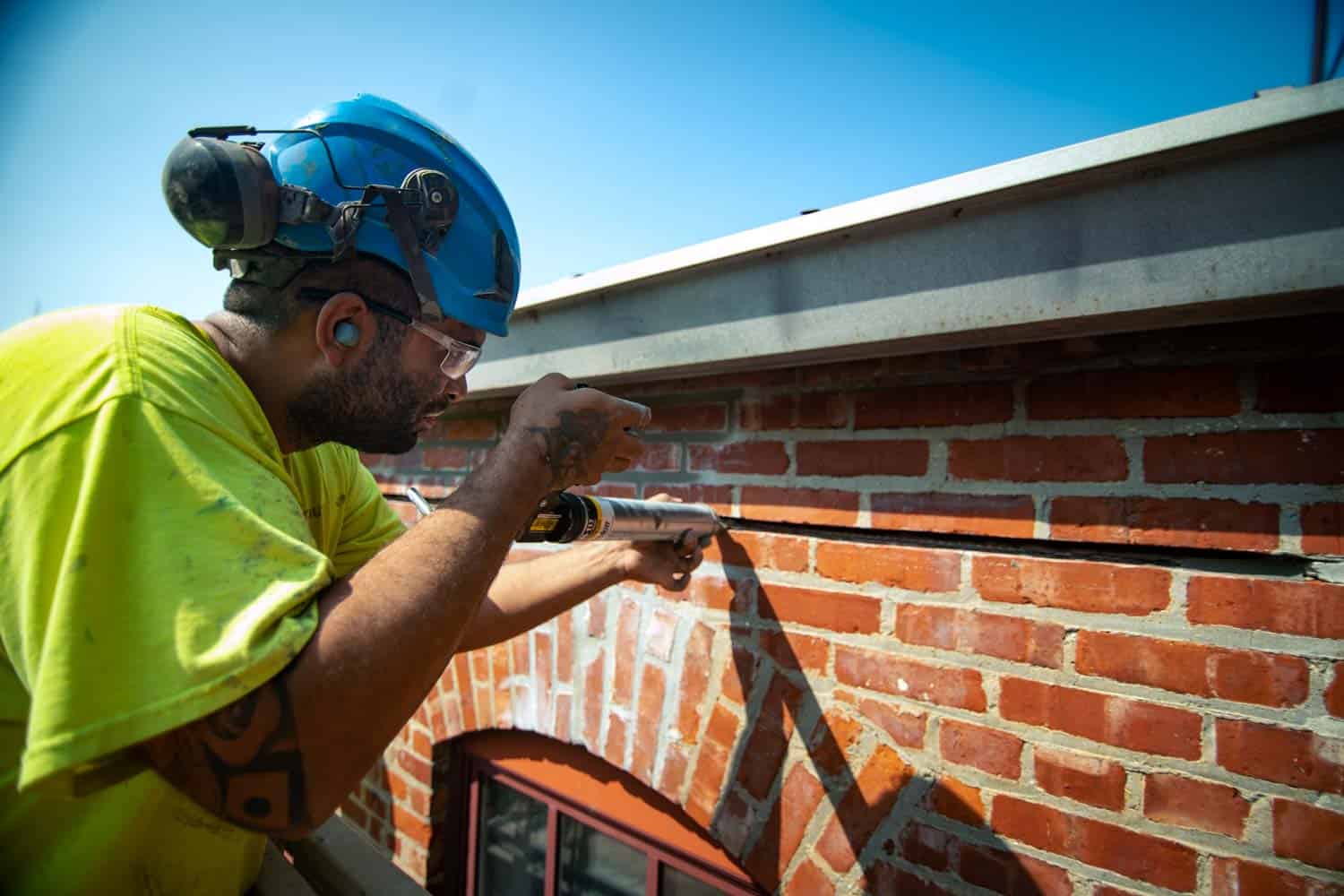A living laboratory for the Pittsburgh community, the Frick Environmental Center relies on carefully designed systems to be one of the greenest publicly owned buildings in the United States.
In 1919, industrialist Henry Clay Frick bequeathed 151 acres of land to the city of Pittsburgh to be used as a natural park in the heart of the city. Almost 100 years later, it’s fitting that the heart of this park is now the Frick Environmental Center, a certified Living Building that connects children and park visitors with the natural beauty of the park.
Frick Park, which includes the original 151 acres donated by Frick as well as 493 additional acres added over the years, is one of Pittsburgh’s most popular parks. Situated in the center of Pittsburgh’s East End just two miles from Carnegie Mellon University, the park itself may be surrounded by busy streets and neighborhoods, but it is heavily wooded, giving visitors a feeling of seclusion not usually available in urban parks. A majority of the park is built on a slowly rising hill, with recreational fields at the base and wooded hiking and biking trails winding up the hill.
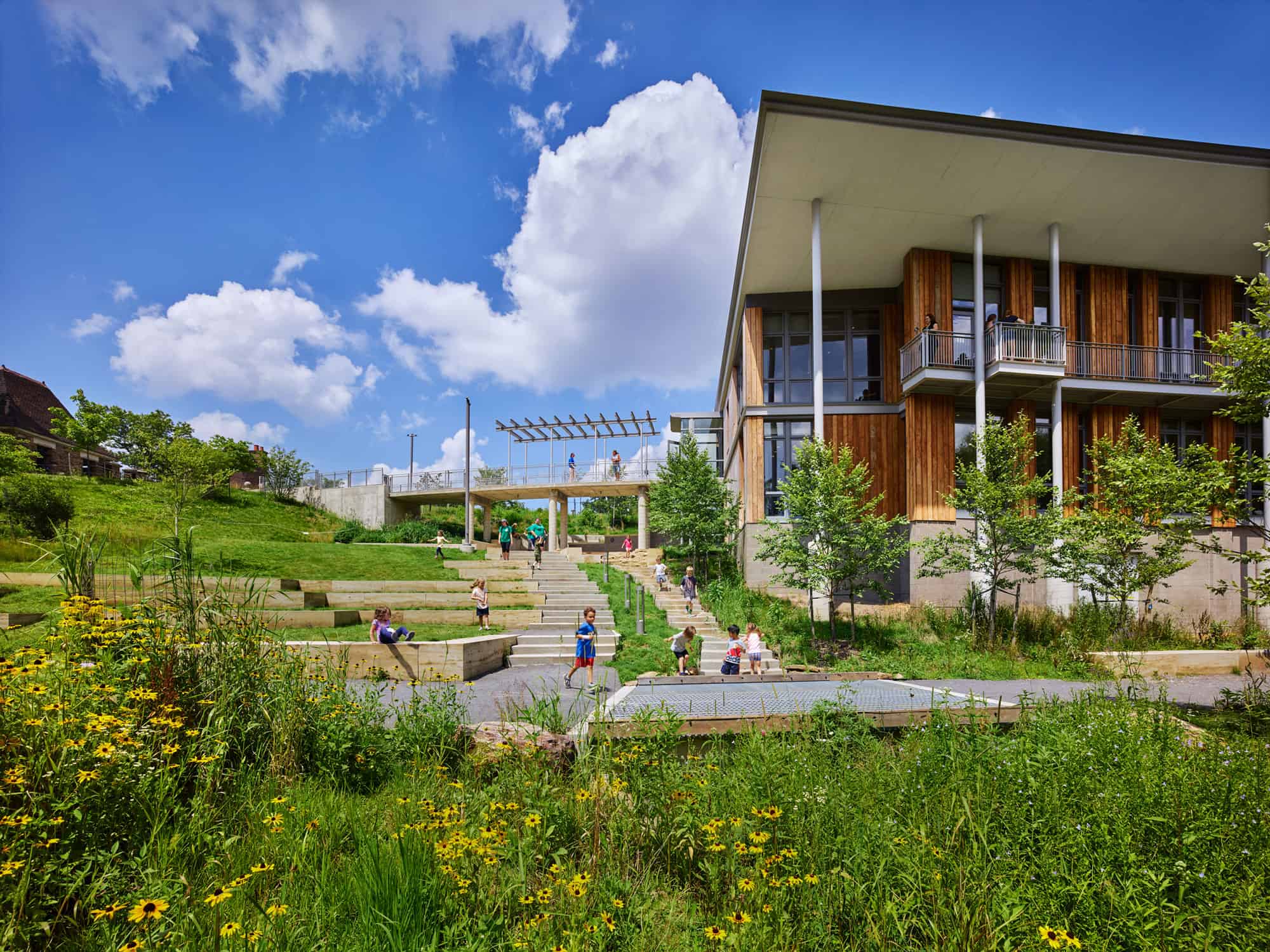
Perched at the top of the hill is the Frick Environmental Center. Opened in 2016, the center was designed to be the hub for all Pittsburgh Parks Conservancy education programs in the park. It was built on the site of the former nature center, which was destroyed by a fire in 2002. The Parks Conservancy led the charge to create a building that was one with nature, using water and energy resources collected on site to operate. Because their goal included teaching children about natural science, the organization dreamed that the building itself would be more than just a classroom: it would be a laboratory.
That’s why the Parks Conservancy decided to seek Living Building Certification through the International Living Future Institute.
A Living Building
The Living Building Challenge is the strictest green building certification available. Only a handful of buildings worldwide seek the certification, and because it relies on real results other than pre-occupancy models, even fewer achieve it. In fact, the Frick Environmental Center is the first free-admission, municipally owned public facility to seek certification.
To be considered as a Living Building, the building must earn certification in seven performance areas called petals. Each petal has specific objectives that must be met to achieve certification. Some of these benchmarks are clear: every building must achieve net-positive water usage and net-positive energy usage. Others are a little more complex and consider specific local and project conditions.
The petals system forces designers and builders to consider all parts of the building, from the water systems to the building’s connection with the environment. Everything is carefully managed. The goal is to create an efficient, beautiful and healthy buildingthat is free of any harmful materials and can last for generations. Sounds easy, right?

Rising to the Challenge
Meeting each of the petal requirements was a challenge for the builders and the administrators of the Frick Environmental Center. Some challenges were easily met in the construction and design phase, others came after the building was already in use.
For the Materials petal, the project team sought out building materials that were Red-List-free and responsibly sourced. Wood, stone and concrete aggregate is locally sourced, and other synthetic materials were carefully researched. They turned to PROSOCO for the company’s air and water barrier system because it met all of their requirements. R-Guard products not only provided a tight seal for better energy efficiency and waterproofing, but also are free of all Red-List-prohibited materials.
But not all of the petals can be earned before occupancy. The Energy and Water petals, for instance, require one full year of proven results. For a public building, this can be challenging. The Frick Environmental Center had to carefully monitor water use to meet the net-positive water requirement for the Water petal due to unexpected influxes of visitors. For instance, far more people came out to Frick Park to watch the Great American Eclipse in 2017 than initially predicted, and a lot of them used the restroom. Without careful planning and intentional over-engineering, a day like this could cause the building to tap into the city water supply, and just one instance of using the city’s water supply for non-potable use could disqualify the building’s 12-month performance period.
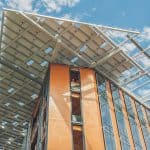
We don't just talk sustainability, we live it.
The Impact of a Great Building Envelope
In order to meet all of the benchmarks needed to earn Living Building certification, every system in the building must be working at peak efficiency. That includes rain collection, grey water disposal, solar energy collection and all heating and cooling systems. The air and weather barrier is no different. When every bit of electricity matters, you can’t afford to have any drafty windows.
That’s where the PROSOCO R-Guard system really helps the Frick Environmental Center. In order to save on energy usage, every night the heating and cooling system shuts down during non-occupancy hours. It eventually turns on to prevent the building from getting too hot or cold to be uncomfortable in the morning, but the longer it can maintain temperature while the system is off, the better.
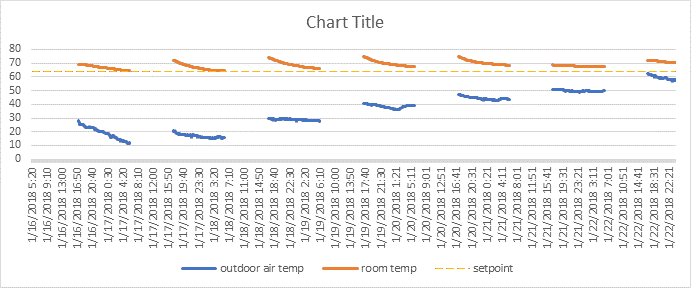
An efficient air and water barrier comes in especially handy during extreme conditions. In January 2018, the Frick Center experienced such conditions, with overnight temperatures dropping down to 10 degrees F.
Despite the cold January temperatures, the building maintained occupancy temperature several hours into the night, allowing the geothermal heating system to stay off for several hours each night. The same can be said during summer months when the building was able to stay cool overnight with less energy usage.
